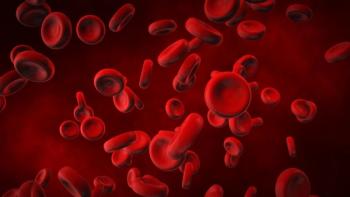
Oncology NEWS International
- Oncology NEWS International Vol 5 No 5
- Volume 5
- Issue 5
PRN Analgesia Leads to Expectations of Peak-and-Trough Pain
MADISON, Wis--An anomaly of pain management is that patients generally report satisfaction with their pain management, even though they are still experiencing pain. The downside of this finding is that if patients are truly satisfied, institutions may see no need to improve pain management programs.
MADISON, Wis--An anomaly of pain management is that patients generallyreport satisfaction with their pain management, even though theyare still experiencing pain. The downside of this finding is thatif patients are truly satisfied, institutions may see no needto improve pain management programs.
With that in mind, two researchers from the University of Wisconsin,Madison--Sandra E. Ward, PhD, RN, of the School of Nursing, andDebra B. Gordon, MS, RN, of the Hospital and Clinic--looked forthe reasons behind these high patient satisfaction ratings.
It may be that pain severity is generally less than patients expect,and so they are not dissatisfied. However, Dr. Ward offers a differenthypothesis. Since most patients receive analgesics "as needed,"she says, patients come to expect, and be satisfied with, a cyclicalpattern of pain relief. Thus, expectation of a pattern of painrelief rather than expectation of severity may be the most importantfactor in patient satisfaction.
Dr. Ward notes that most analgesics are still prescribed "asneeded," even though "around-the clock" schedulingis recommended by all pain management guidelines.
With "as needed" administration, patients experiencepain, ask for an analgesic, receive some level of pain relief,and then wait for the pain to return. In other words, they expect,and receive, a peak-and-trough pain cycle.
The issue was examined in a longitudinal study of patient satisfaction,measured at baseline and 2 years after implementation of a programto improve pain management (see table below). The protocol calledfor chart reviews and outpatient assessments via questionnairesand telephone interviews in an attempt to overcome the limitationsof the inpatient evaluations used for the baseline study.
For example, in the baseline study, nurses determined eligibility.If a nurse did not think a patient had pain, that patient wasnot asked to complete a survey. "The very patients most likelyto be dissatisfied with care may have been excluded from study,"Dr. Ward says. In addition, despite efforts to assure confidentiality,patients might have been hesitant to express dissatisfaction withthe people currently providing their care.
The results, reported in the April, 1996, issue of the Journalof Pain and Symptom Management (pp 242-251), showed little changefrom baseline in patient satisfaction with pain control, withthe vast majority reporting being satisfied or highly satisfied.Pain intensity ratings also showed little change.
The chart review showed that "as needed" rather than"scheduled" analgesic administration predominated: Only10 of 46 orders for IV analgesics specified patient-controlledanalgesia.
The investigators conclude that "patients may neither appreciatenor understand that scheduled around-the-clock dosing can providemore consistent pain relief by dampening peaks and allowing moretime at low pain intensities."
Steps Taken toImprove the Management of Pain at the University of Wisconsin
1. A Pain Resource Nurse program was begun in which nurses fromeach unit were trained to be resources in the care of patientswith pain.
2. Monthly interdisciplinary pain case conferences were established.
3. Nationally known pain management experts consulted with thepain team.
4. Flowsheets were revised to include pain triggers and spacefor documentation of pain assessments.
5. Pain was added to the standard nursing assessment parameters.
6. A laminated pain reference card was provided to nursing andmedical staff.
Articles in this issue
over 29 years ago
No Need to Delay Mammography After FNA, Study Showsover 29 years ago
Pediatric Cancer Guidelines Are a National Effortover 29 years ago
ATL's HDI Digital Ultrasound Is Approved for Breast Indicationover 29 years ago
Natural History of HIV Supports the Use Of Early Interventionsover 29 years ago
Aids Vaccine Trial Fails to Show Clinical Benefitover 29 years ago
Rep. Porter Honored For Work on BudgetNewsletter
Stay up to date on recent advances in the multidisciplinary approach to cancer.

















































































